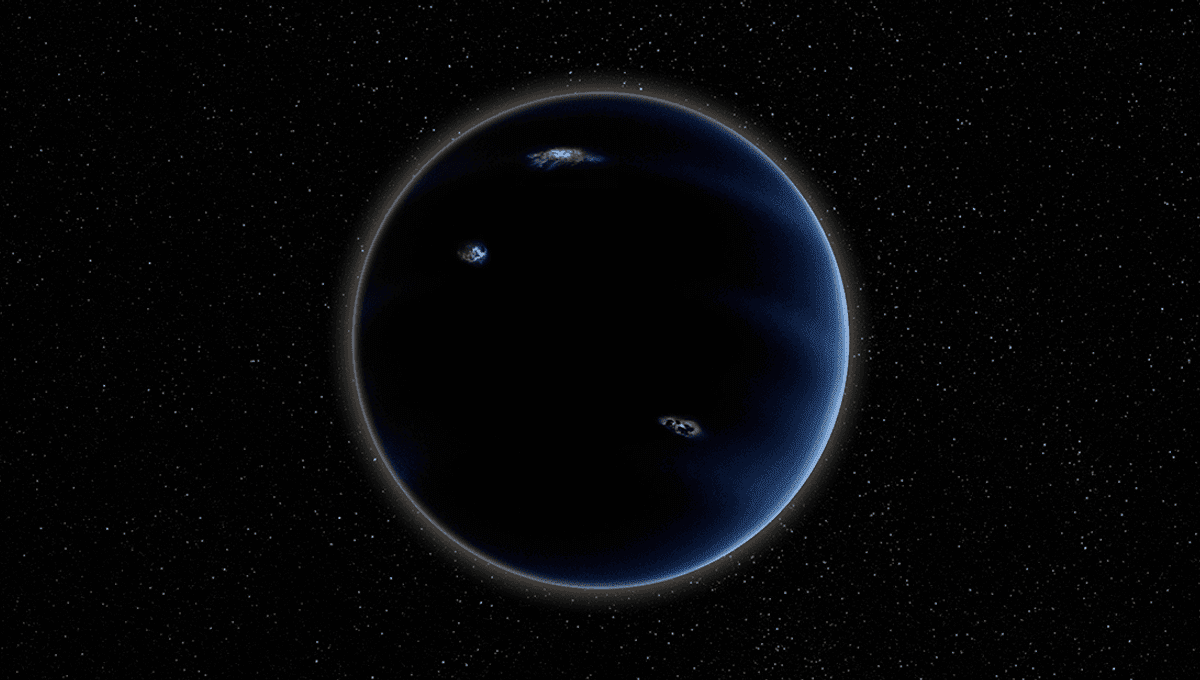
An astronomer has outlined a new way of finding the elusive Planet Nine, if it exists at all and has picked up moons as it orbits around our Sun.
You may be wondering why we have so much trouble finding a planet in our own Solar System, when thousands have been discovered in recent years around other stars. Well, for planets orbiting other stars, we have the transit method. Essentially, when a planet goes past a star we are observing, we see a dip in light. Planets in our own star system, other than Mercury and Venus, do not pass in front of the Sun, rendering the transit method useless. Unless Planet Nine suddenly takes a trip to the center of the Solar System, we are not going to discover it in this way.
However, we can spot planets by looking at discrepancies in the orbits of other planets and bodies in the solar system, showing us where to point our telescopes. In fact, this is how astronomer and mathematician Urbain Le Verrier discovered Neptune in 1846.
The reason why people are looking for a mysterious ninth planet at all is because two astronomers from Caltech presented evidence that six objects past the orbit of Neptune were bunched together in a way that suggested they were being “herded”. The team have narrowed down where they believe the object – which they believe to be two to four times the radius of Earth – is, but it remains elusive, with suggestions that it could even be a statistical anomaly and selection bias on behalf of the astronomers from Caltech.
Research carried out by Kevin Napier of the University of Michigan looked at other objects past the orbit of Neptune. If the six objects are evidence of bunching caused by a hidden planet, this would mean that their orbit differs from orbits of other objects in the same region. The team did not find evidence to support that this was the case, and suggested the evidence for Planet Nine was, in fact, selection bias.
If Planet Nine is there – as some still believe to be the case – we still need a better way of finding it. In a new paper posted to preprint server arXiv, astronomer Man Ho Chan suggests that one way to look for the planet is to look for thermal signatures of any moons it may have picked up.
The paper suggests that any large planet lurking between the inner Oort cloud and Kuiper Belt is likely to pick itself up some moons, just like other dwarf planets outside Neptune’s orbit (such as Pluto) have done. As the moons orbit the planet (or, as some have wildly speculated, a primordial black hole) its pull would deform the planet over and over again, heating it up in the process known as tidal heating.
“We show that the tidal effect can heat up the satellites significantly, which can give sufficient thermal radio flux for observations, even if planet 9 is a dark object,” the author writes. “This provides a new indirect way for examining the planet 9 hypothesis and revealing the basic properties of planet 9.”
By Chan’s calculations, based on objects in the region of the theoretical planet, it should pick up a reasonable number of moons, perhaps as high as 20, making the search for heat signatures slightly easier. This, Chan writes, would work even if (and it’s a big if) Planet Nine is a “dark object”.
“If [Planet Nine] is a dark object and it has a satellite system, our proposal can directly observe the potential thermal signals emitted by the satellites now,” he concludes. “Therefore, this would be a timely and effective method to confirm the [Planet Nine] hypothesis and verify whether [Planet Nine] is a dark object or not.”
The research is posted to preprint server arXiv, and has not yet been peer-reviewed.
Source Link: Astronomer Finds New Way To Find Mysterious Planet 9, If It Exists At All